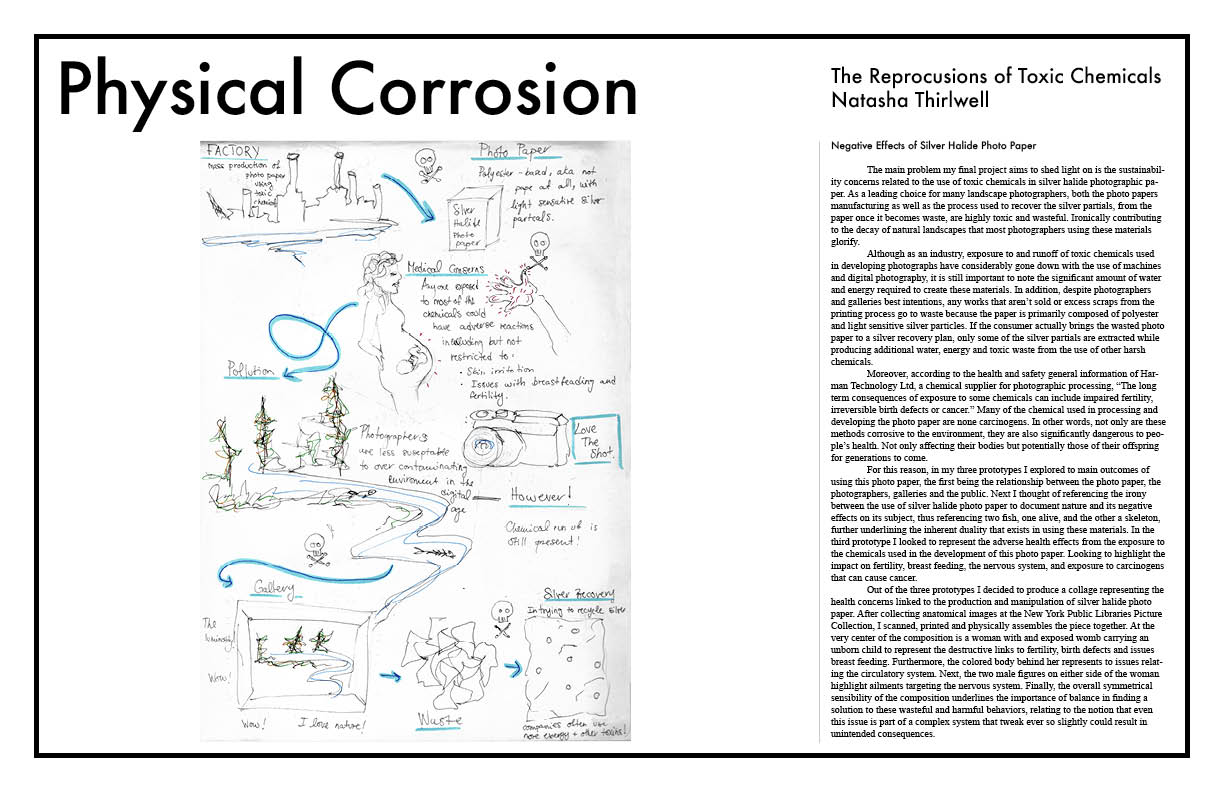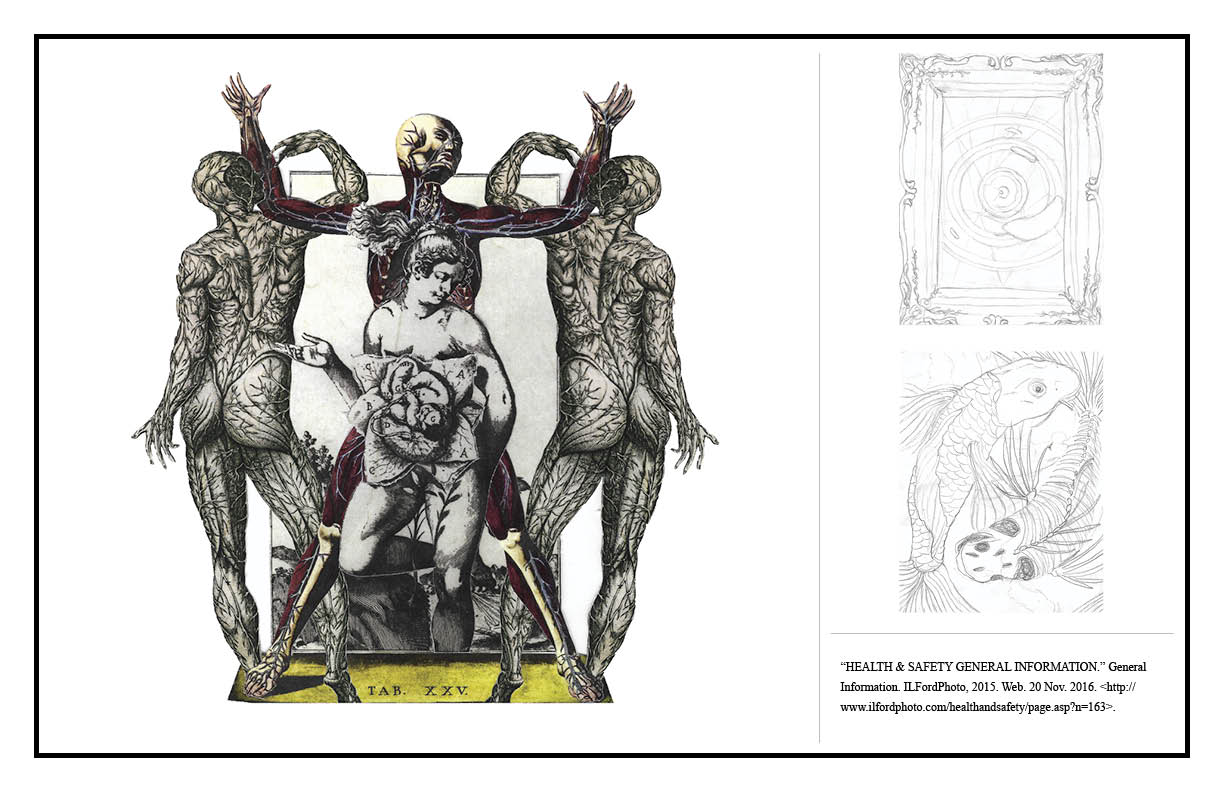Negative Effects of Silver Halide Photo Paper
The main problem my final project aims to shed light on is the sustainability concerns related to the use of toxic chemicals in silver halide photographic paper. As a leading choice for many landscape photographers, both the photo papers manufacturing as well as the process used to recover the silver partials, from the paper once it becomes waste, are highly toxic and wasteful. Ironically contributing to the decay of natural landscapes that most photographers using these materials glorify.
Although as an industry, exposure to and runoff of toxic chemicals used in developing photographs have considerably gone down with the use of machines and digital photography, it is still important to note the significant amount of water and energy required to create these materials. In addition, despite photographers and galleries best intentions, any works that aren’t sold or excess scraps from the printing process go to waste because the paper is primarily composed of polyester and light sensitive silver particles. If the consumer actually brings the wasted photo paper to a silver recovery plan, only some of the silver partials are extracted while producing additional water, energy and toxic waste from the use of other harsh chemicals.
Moreover, according to the health and safety general information of Harman Technology Ltd, a chemical supplier for photographic processing, “The long term consequences of exposure to some chemicals can include impaired fertility, irreversible birth defects or cancer.” Many of the chemical used in processing and developing the photo paper are none carcinogens. In other words, not only are these methods corrosive to the environment, they are also significantly dangerous to people’s health. Not only affecting their bodies but potentially those of their offspring for generations to come.
For this reason, in my three prototypes I explored to main outcomes of using this photo paper, the first being the relationship between the photo paper, the photographers, galleries and the public. Next I thought of referencing the irony between the use of silver halide photo paper to document nature and its negative effects on its subject, thus referencing two fish, one alive, and the other a skeleton, further underlining the inherent duality that exists in using these materials. In the third prototype I looked to represent the adverse health effects from the exposure to the chemicals used in the development of this photo paper. Looking to highlight the impact on fertility, breast feeding, the nervous system, and exposure to carcinogens that can cause cancer.
Out of the three prototypes I decided to produce a collage representing the health concerns linked to the production and manipulation of silver halide photo paper. After collecting anatomical images at the New York Public Libraries Picture Collection, I scanned, printed and physically assembles the piece together. At the very centre of the composition is a woman with and exposed womb carrying an unborn child to represent the destructive links to fertility, birth defects and issues breast feeding. Furthermore, the coloured body behind her represents to issues relating the circulatory system. Next, the two male figures on either side of the woman highlight ailments targeting the nervous system. Finally, the overall symmetrical sensibility of the composition underlines the importance of balance in finding a solution to these wasteful and harmful behaviours, relating to the notion that even this issue is part of a complex system that tweak ever so slightly could result in unintended consequences.
“HEALTH & SAFETY GENERAL INFORMATION.” General Information. Harman Technology Ltd, 2015. Web. 20 Nov. 2016. <http://www.ilfordphoto.com/healthandsafety/page.asp?n=163>.


